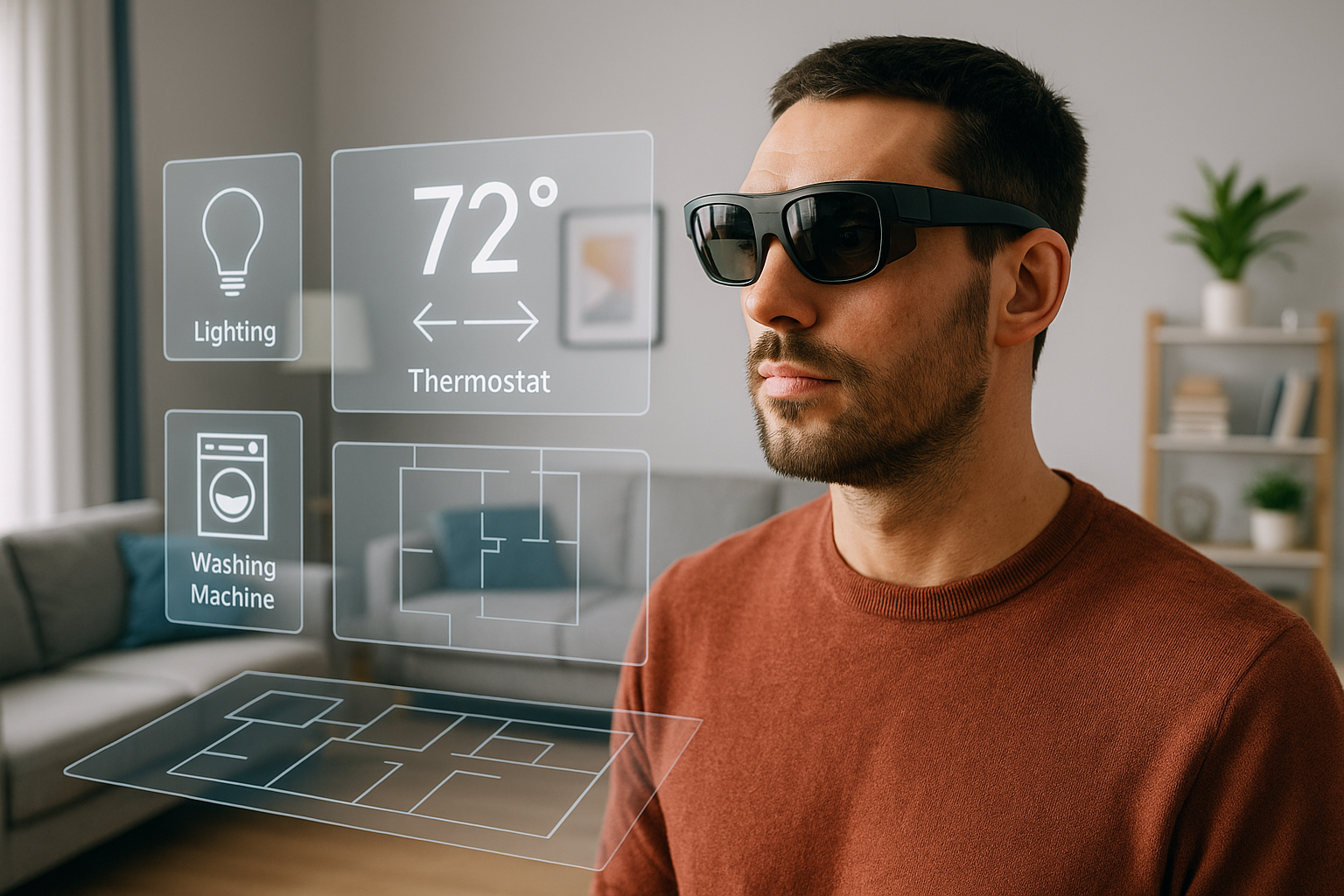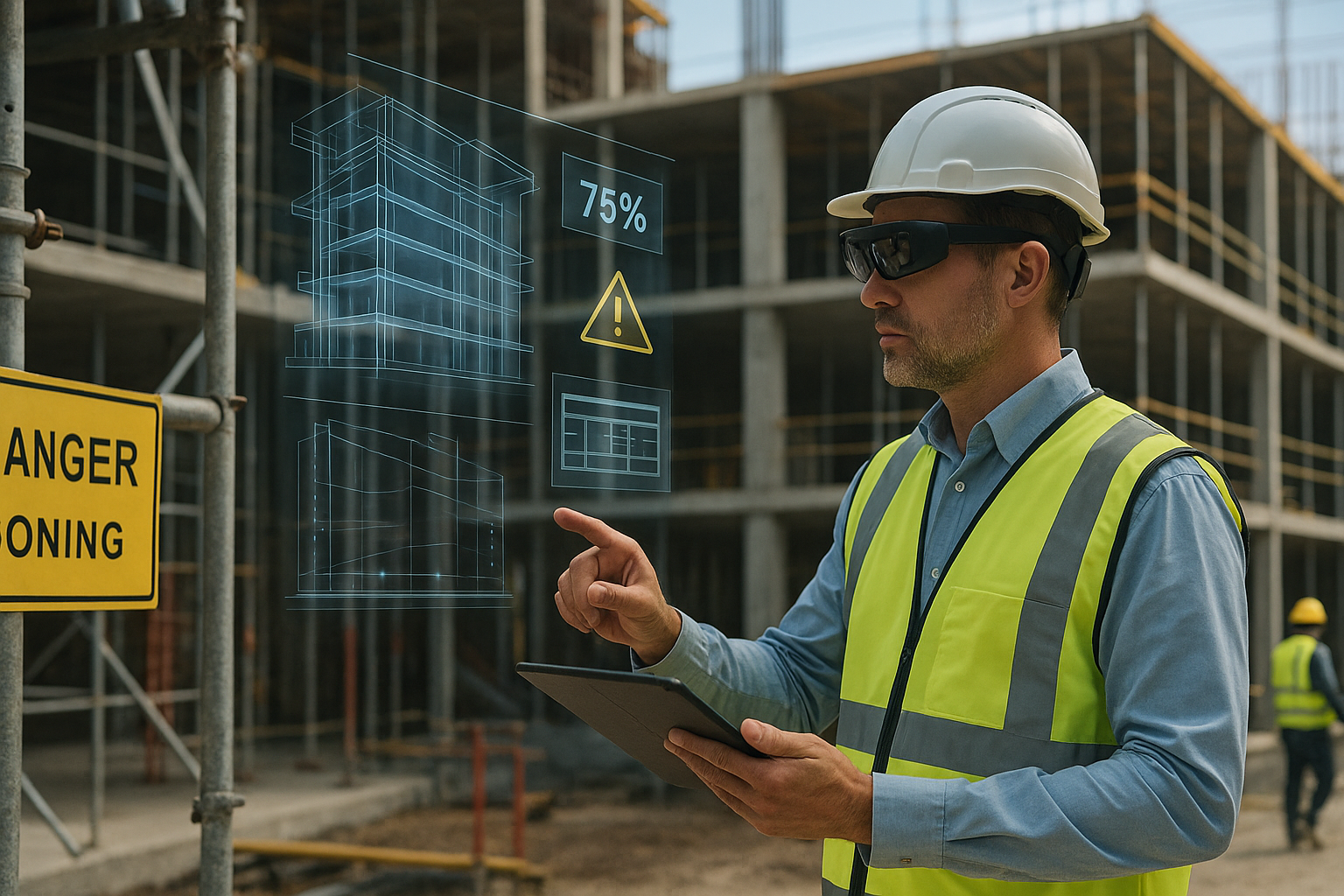What’s new in AR this month? In August 2025, the smart home ecosystem made significant strides with two major developments: the release of Matter v1.4.2, which enhances device reliability and onboarding experiences, and Apple’s announcement of a next-generation Siri-enabled smart home display slated for 2026, alongside a Pixar-like AI robot assistant projected for 2027. These advancements indicate a strong movement toward more intuitive and immersive smart home interfaces powered by augmented reality (AR).
Smart Home Growth and AR’s Expanding Role
The global smart home market is expected to grow exponentially—from $100 billion in 2025 to over $755 billion by 2032. AR’s role in this expansion is becoming increasingly central. As a natural user interface, AR enables homeowners to visualize, manage, and interact with their devices through intuitive overlays, reducing reliance on separate apps or voice-only control.
Beyond user convenience, AR introduces visual feedback and spatial understanding to a system previously limited to screens and voice assistants. This change not only improves interaction but also lowers barriers for older users, children, and less tech-savvy homeowners.
Quick Facts
- Matter v1.4.2 now supports Wi‑Fi onboarding and improved router integration, enhancing reliability for hubless smart homes. Read more.
- Apple’s new smart display and robot assistant aim to bring immersive, AR-enabled voice control interfaces to mainstream homes. Full article.
- Combining AR with smart home ecosystems promotes adoption by providing spatially anchored, user-friendly control methods.
How AR Transforms Smart Home Experiences
1. Seamless Setup and Onboarding
AR allows users to scan new devices in real-time. Visual overlays guide users through the setup process—highlighting connectivity status, integration options, and preferred configurations without navigating multiple apps.
Homebuilders are starting to partner with tech firms to pre-install AR-ready systems, offering buyers a plug-and-play smart living experience out of the box.
2. Intuitive Control
With AR glasses or a smartphone, users can simply look at a device and interact with it. Tapping on an AR interface above a thermostat lets you adjust temperature; viewing a light switch displays its energy use and on/off status.
Unlike traditional controls, AR adapts to context—offering suggested routines based on time of day or historical behavior. The more a user interacts, the smarter the interface becomes.
3. Predictive Maintenance and Guidance
AR can display contextual help over appliances, such as showing how to replace filters or troubleshoot alerts with visual step-by-step assistance. For property managers and multi-unit housing, this translates to reduced service costs and quicker tenant support.
In some pilot programs, AR overlays have cut appliance downtime by up to 30%, allowing technicians and residents to resolve issues before escalation.
4. Centralized Spatial Dashboards
Instead of flat mobile apps, users can deploy an AR dashboard on their wall or table. These displays present energy consumption, air quality metrics, and device statuses in an at-a-glance interface customized to the home layout.
AR can even enable shared experiences: in family homes, different users can view age-appropriate controls and notifications depending on their identity and device permissions.
Real-World Use Cases
- Energy Efficiency: Families using AR overlays to monitor solar panel output and HVAC usage cut peak electricity consumption by 18%.
- Device Discovery: Visualizing sensor networks in AR helped reduce installation errors and improved home network stability by 35%.
- Accessibility Enhancements: For users with hearing impairments, AR can visualize spoken alerts, enabling inclusive emergency and home status communication.
- Rental Market Differentiation: Real estate platforms are beginning to showcase AR-enabled smart homes as premium listings, increasing rentability and buyer interest.
Best Practices for AR + Smart Home Integration
- Choose devices certified with Matter: This ensures interoperability across platforms and smoother AR onboarding.
- Design simple visual overlays: AR interfaces should be intuitive, not cluttered—icons should reflect real-world context.
- Ensure redundancy: Always offer fallback methods like voice or mobile app control in case of AR hardware downtime.
- Highlight value-driven use cases: Focus early deployments on security, energy savings, and health monitoring—areas with clear user benefit.
- Incorporate AI agents: Combine AR with intelligent agents that learn routines and offer proactive suggestions for lighting, HVAC, or security automation.
Looking Ahead
- Apple’s Siri-enabled display and AI assistant may become AR entry points for mainstream users.
- Matter’s continued evolution will reduce vendor lock-in, encouraging broader adoption of AR interfaces.
- AR, AI, and smart home synergy will support predictive environments—homes that adapt to user preferences without direct input.
- Spatial computing may merge with holographic UI projections for kitchen surfaces, bathroom mirrors, and furniture interfaces—blurring lines between digital and physical UX.
Further Reading
- Matter Standard Overview – Wikipedia
- Apple’s Smart Home AI and Robotics Strategy
- Matter 1.4.2 Update Breakdown – The Verge
- Smart Home Trends – New Home Source
Key Takeaways
- AR is becoming the default interface for the smart home—faster, more intuitive, and context-aware.
- With Matter support and AI integration, smart homes are moving toward seamless, platform-agnostic operation.
- The next evolution will see homes that not only respond to users but anticipate their needs in real-time—bridging physical and digital living.
- For architects, developers, and technology providers, AR integration is no longer a luxury—it’s a competitive edge for modern home design.




